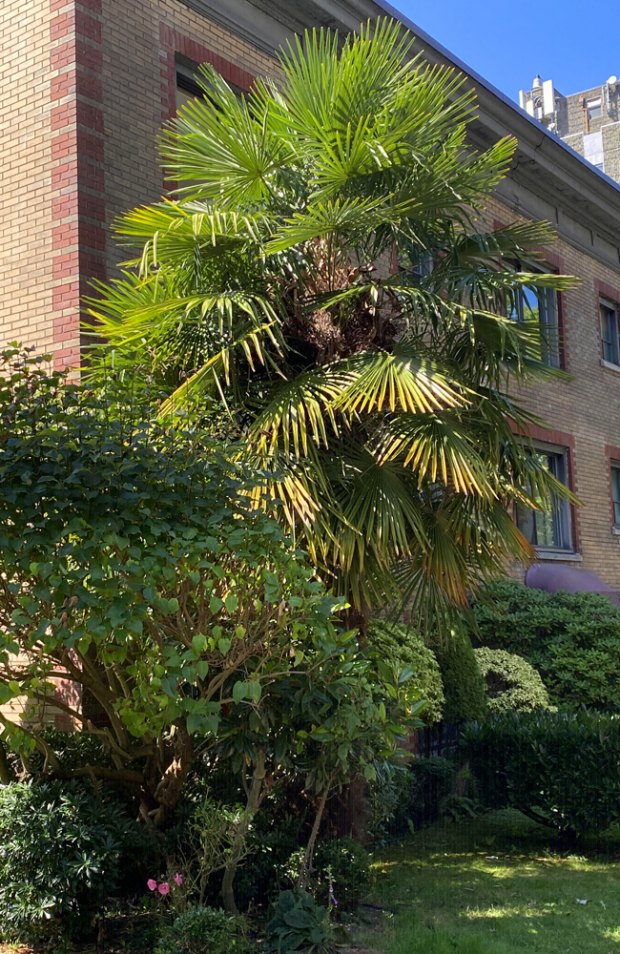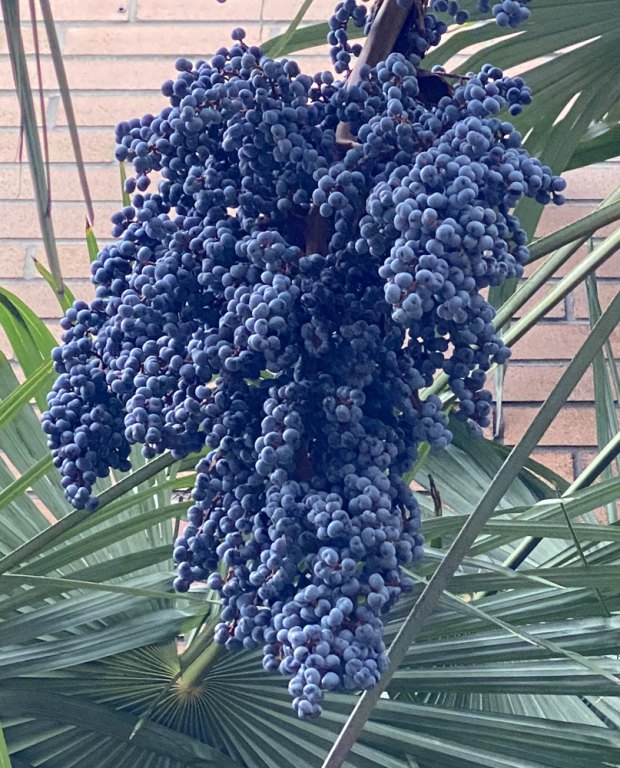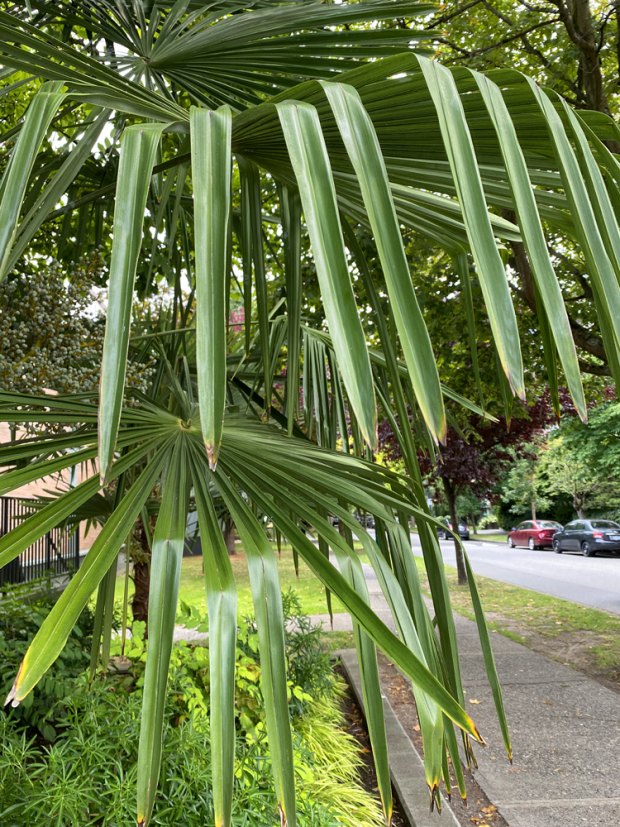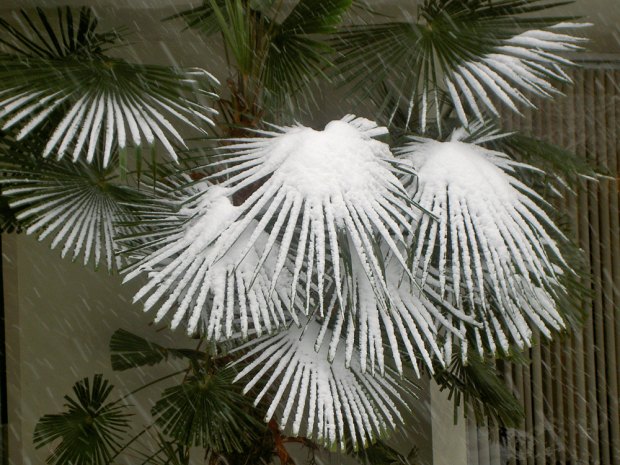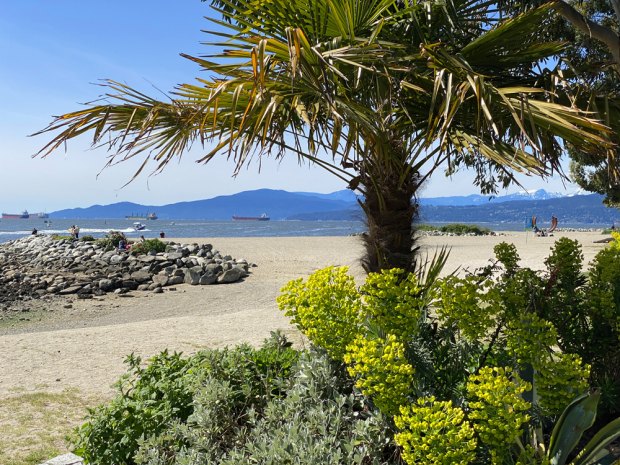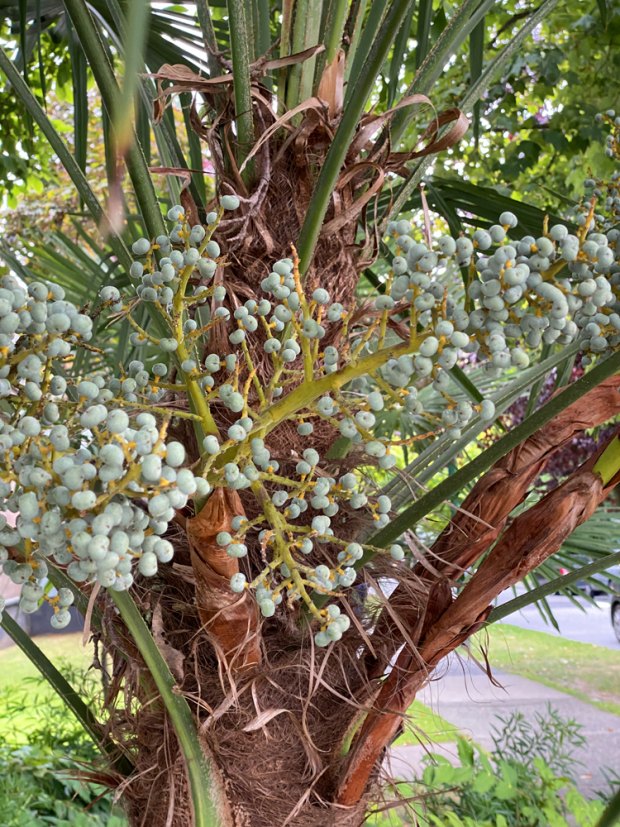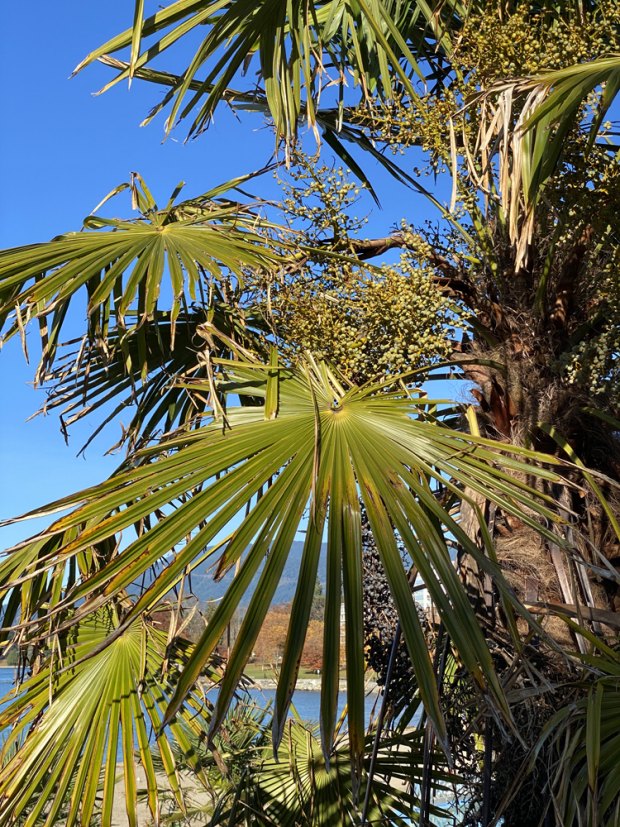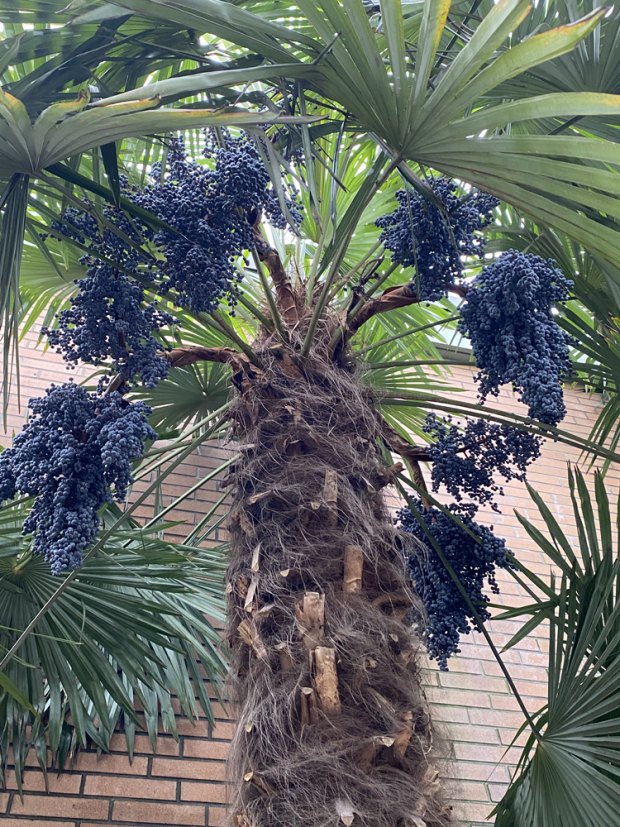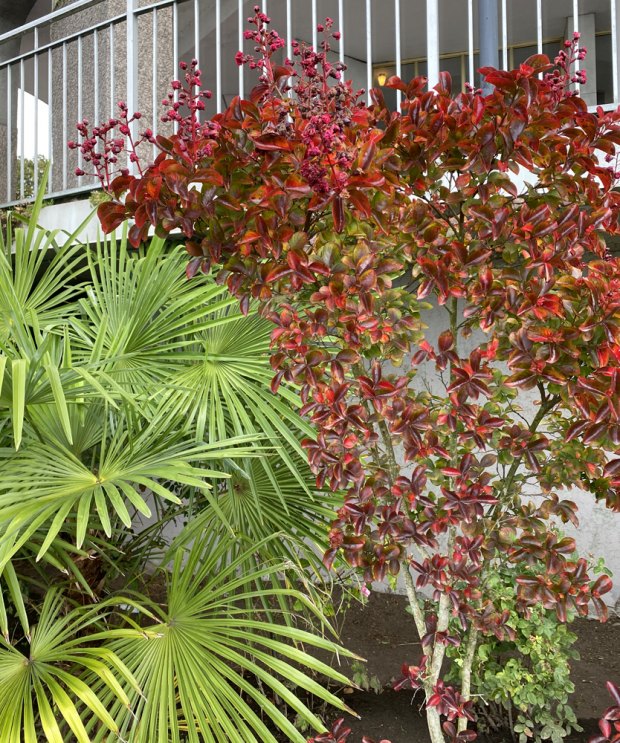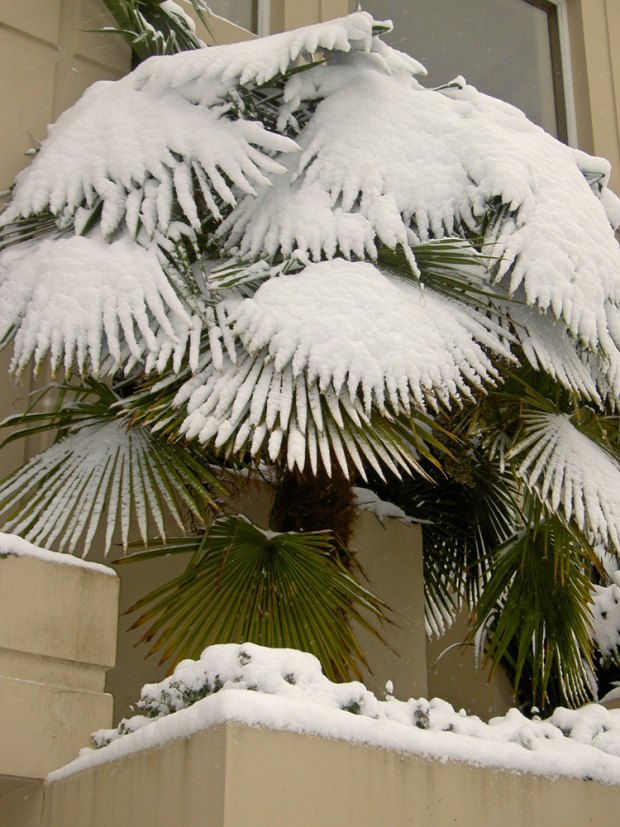
When is a tree not a tree? When it’s a palm, a single-stemmed monocotyledon.
Along with every other member of the Arecaceae family of palms, the windmill palm is a monocot; its seeds sprout with only one cotyledon; that is the embryonic leaf that grows before the first true leaf. Which is why it isn’t botanically a tree no matter how tall it grows. Palms have no wood; from the outside in, its components are pseudobark, cortex, and central cylinder, the innermost being what would be wood in a tree.
Trachycarpus fortunei is the Latin binomial name of the Chinese windmill palm that is becoming ubiquitous along British Columbia’s coast here in Vancouver. It’s also commonly known as a Chusan palm after the island in China where it was first collected. While windmill palm’s origins are China, it is equally at home in Japan, Myanmar, and India. (And now all over the world.) Because of its usefulness in providing material for rope, sacking, and strong cloth, this palm “tree” has been cultivated for thousands of years in China and Japan. As a result, its native territory can no longer be pinpointed, only estimated to be montane oak forests up to 2,400 feet above sea level, where it grows up to 20 m (66 ft.) in height.
Trachycarpus translates as “rough fruit”—some species in the genus have hairy fruit. The specific epithet fortunei could be referring to how fortunate the people are who grow this tree, both for its prolific fruit and its tough fibre. However, the epithet derives from the name of the Scottish botanist and plant hunter, Robert Fortune (181280), who collected it from China and introduced it to Britain, North America, and Australia. In fact, this palm’s prolific fruit is listed either as being inedible or only useful medicinally, so don’t save the fruit for dessert; only save the seeds for propagation.
Windmill palm’s wide-spreading, compound palmate leaves comprise multiple leaflets, each of which is folded into a sharp V (they are induplicate), allowing rain to run off. Conversely, snow has no problem gathering on these palmate fronds. The leaves measure between 140 cm and 190 cm, and they hang on petioles that are half as long. When leaves age and fall from the single stem of a windmill palm, they leave behind some of their petioles among the hairs of the stem.
The windmill palm looks out of place growing in Vancouver’s temperate coastal climate. It looks tropical, exotic, with its crown of extravagant leaves. But it’s a slow-growing, hardy evergreen that is able to survive cold temperatures to minus 20º C (minus 4º F). It’s also able to enjoy plenty of heat. What some of the palms on the seawall around English Bay have struggled to endure in recent summers are our lengthening stretches of summer drought. Palm trees prefer a cool moist summer; something of a scarcity during climate change.
Like most tree-sized plants, palms do not flower until they reach maturity. The species is dioecious—male flowers grow on one plant and female flowers on another. All flowers are yellow initially. Emerging from a flower bud that resembles a fat cob of corn, the female flowers resemble corn grains. (Like a palm, corn is also a monocot.) The inflorescences stretch out in readiness for being pollinated by the pollen emerging from the even fatter male “cobs". By May, the clusters of female flowers look very showy. A website devoted to identifying commonly cultivated palms says, “Inflorescence to 50 cm, congested and densely branched to four orders.” Branched to four orders is a new term for me, but it becomes clear in the photographs I’ve taken.
Here is a photograph of male flowers from a website that says the male inflorescence is “compact and woolly.”
Our local bees enjoy windmill palm nectar and successfully pollinate the flowers. Once pollinated and fertilized, female palm flowers grow into small green drupes. A drupe is a fruit that has a soft fleshy mesocarp around the hard stone that encloses the seed, just like peaches, nectarines, and apricots. As summer turns to fall and progresses to winter, drupes ripen from green to blue to purple, covered with a light grey bloom.
The best propagation of palms is apparently by seed but the seed can take as long as nine months to germinate so be patient. The young plant likes being in well-drained soil. Few diseases attack palms, though leaf spot and leaf yellowing can be problematic. Around Vancouver, windmill palms are very much at home.
The windmill palm is a slow-growing, evergreen accent plant that brightens a garden space and sets off the features of a house beautifully in spring, summer, and winter.
Text and photos Nina Shoroplova, Vancouver Master Gardener
Sources
1. Botany with Laura Caddy, Horticulturalist and Curator of the Alpine Garden at UBC Botanical Garden; information from University of Florida website, https://edis.ifas.ufl.edu/publication/EP473
2. Ibid; and https://www.missouribotanicalgarden.org/PlantFinder/PlantFinderDetails.a...
3.By the way, while working for the British East India Company in 1848, Robert Fortune introduced Camellia sinensis (tea plant) to India.
4.https://pfaf.org/user/plant.aspx?latinname=Trachycarpus+fortunei
5.Ibid.
6.https://idtools.org/id/palms/palmid/factsheet.php?name=trachycarpus+fort...
7.http://palmvrienden.net/gblapalmeraie/2017/06/27/trachycarpus-is-it-a-ma...
